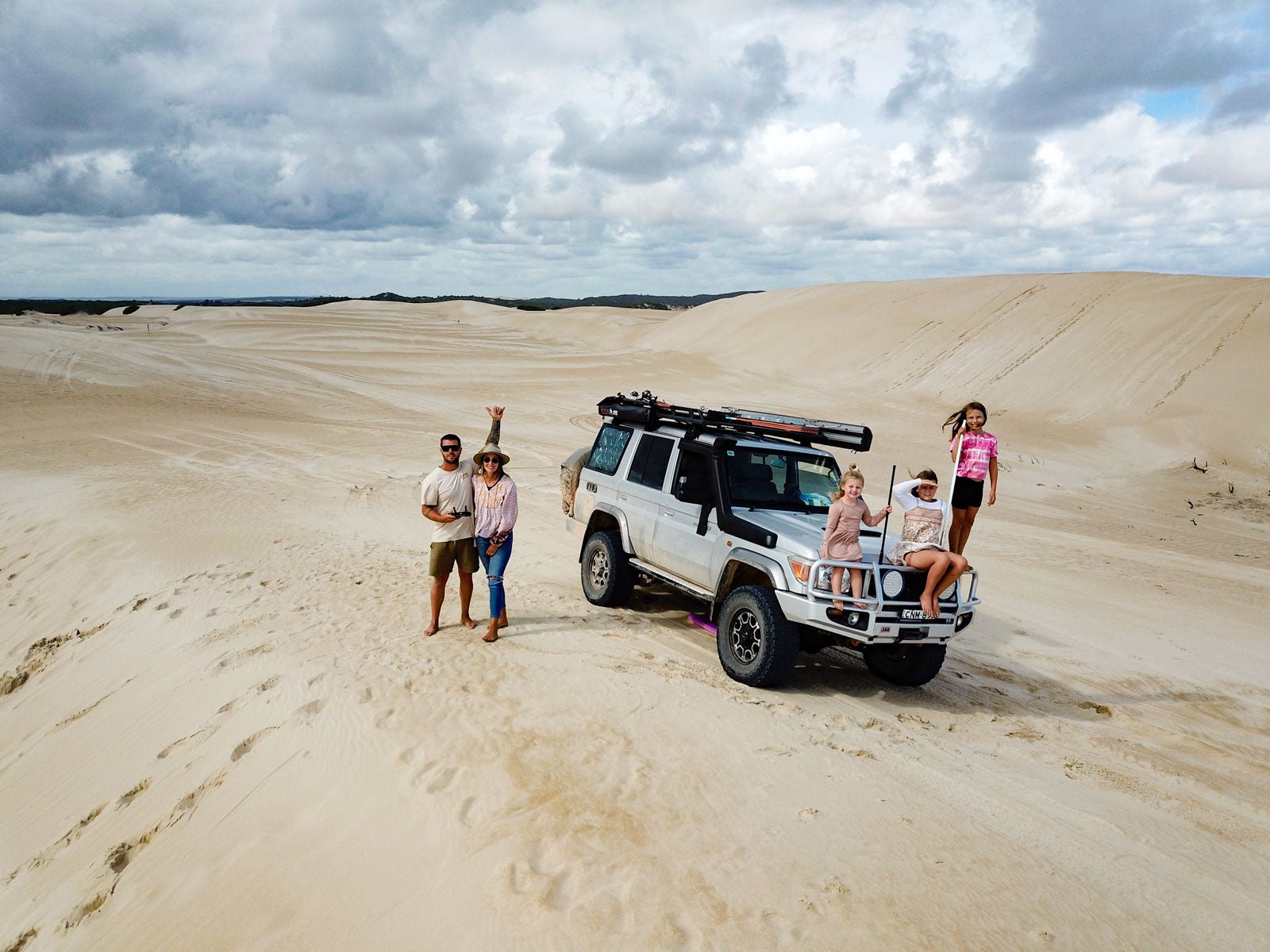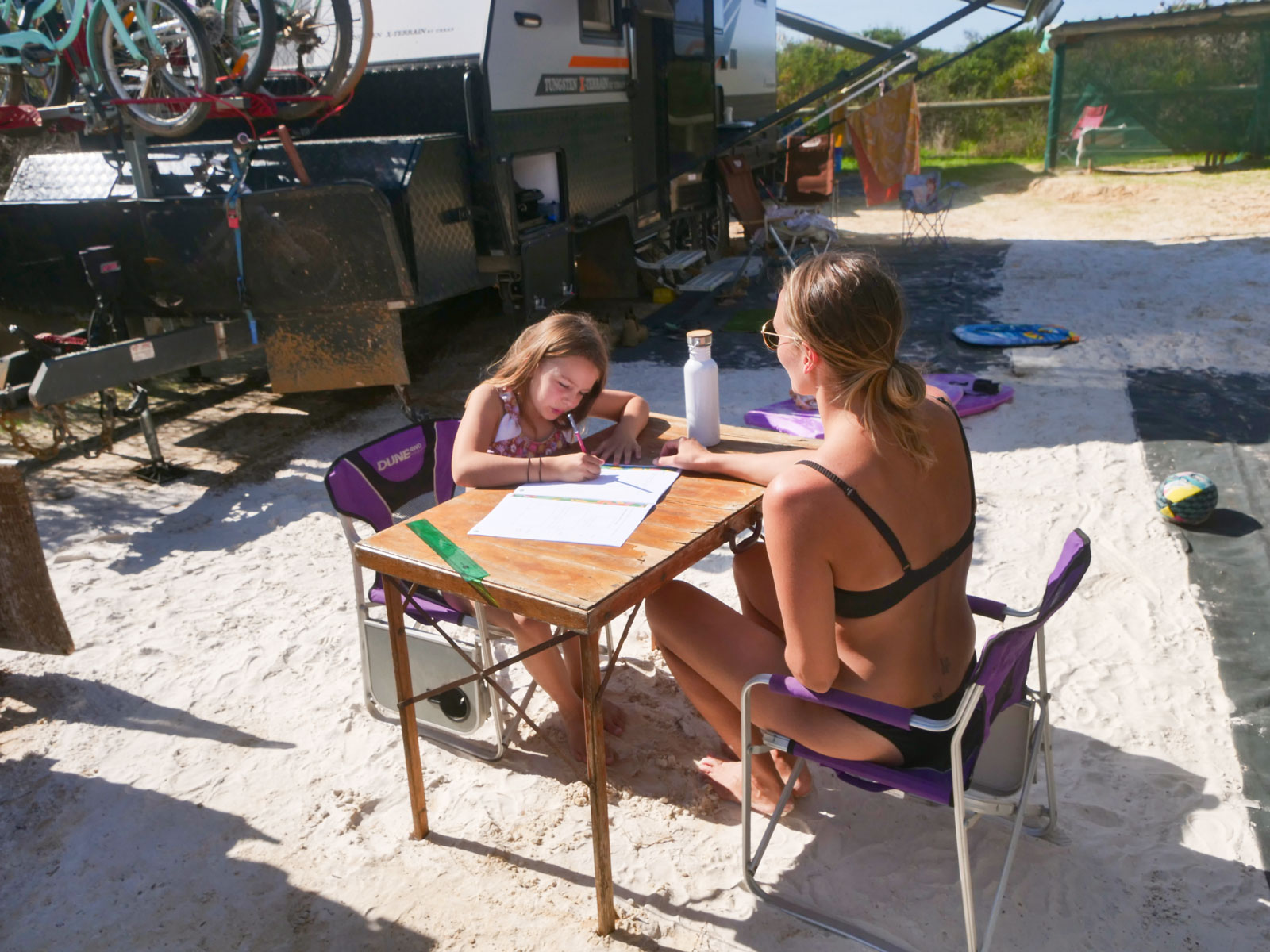How to: Distance Education For Kids On The Road

If you follow travelling families on social media, you may start to think that their life looks ideal. It can make you ponder whether it would indeed be a wonderful experience to travel with your children full-time, teaching them on the road. You may begin to believe that it will be a positive bonding experience with your children. People will also tell you that children learn more on the road than in mainstream education. It’s a no-brainer, right?
Life on the road can be rewarding for parents, but it does come with many challenges. Parents with school-age children find they must juggle the roles of parent and teacher, on top of planning their next destination and any other hurdles thrown their way. It can be exhausting and many families, like ours, struggle to find time to fit schooling into their busy schedule.
Schooling Options
With so many families choosing to travel, we are fortunate to have a range of schooling options to suit individual family needs. The two main education alternatives for families travelling in Australia are homeschooling and distance education. Some parents choose to homeschool their children as they feel they have more control over their child’s learning and can develop programs to suit their child’s individual needs and interests. Unfortunately, there are restrictions in some states that do not allow travelling families to homeschool. Distance education is programmed by a network of qualified teachers using an educational platform to teach students who are not physically present at school. The qualified teachers do all the programming which can make it easier for some families.
Distance Education
There is some negative information on the internet regarding distance education and how it does not meet the needs of travelling families. Fortunately, this has not been my experience. While distance education recommends four hours of learning a day, I usually aim for at least ninety minutes of formal lessons a day with extra time integrated into car trips and days of exploring. Live zoom lessons, different learning techniques and assemblies are optional. The internet is required to submit completed work which at times can be difficult, especially in national parks and remote camps where there is limited access. However, most towns have internet access, and teachers are usually very flexible if you need to submit work a little late.
So far, my experience with Sydney Distance Education has been very positive. The teachers have creatively designed programs around travelling families to engage children on the road. You are required to submit assessment sections at the end of the week or fortnight using an application called Adobe Scan – or you can post hardcopies back to the school. The school provides all required educational resources.

Challenges
Finding time to teach my children while travelling has certainly been the biggest challenge on the road. We do not settle in one area for too long as we have strictly twelve months to travel around Australia. When we first left home, schooling was a novelty as I was the teacher, and my children were eager to learn. By the time I figured out how to navigate the education program and get into the swing of a school routine, my children had lost their motivation and refused to cooperate. Cue tears, bribes with sweets and threats of iPad restrictions. Life was tough for a short while, until I decided to sit down and ask my children why they didn’t like learning on the road. They told me there was too much work and not enough of the fun stuff (I had been skipping over some of the ‘fun activities’ and just focusing on Maths and English).
Think Outside The Box
I decided to get creative and headed to Kmart to top up on craft activities, as well as digging into the resource box provided by the school. Learning is now very hands-on in my caravan – we build and create to make it as interesting as possible. I also contacted the school and requested that only priority work be sent for term two – this would mean we still covered the key learning areas but with a much more manageable workload.

I often hear or read about the struggles on the road with children, some even returning home due to the stress or children not coping with the change. Unfortunately, adapting to a new way of life takes time. For me, it took three months to adjust to distance learning. Families on social media usually only post the good times and therefore make travelling with children look easy.
When schooling on the road becomes more of a task for the children, change it up! Think outside the box. Get creative. Talk to the teachers and ask for their ideas or reduce the workload where you can. If you try to race through each lesson, you will only stress yourself and your children out, and schoolwork will become a burden.
Stay Grounded
Children have various learning styles and finding out how they process information is best done by observing and giving them a range of activities. Some days can be tough (and some enjoyable) but remember why you decided to travel in the first place. If, like me, it was to have that extra time with family, then celebrate the wins and accept the occasional defeat if you must. You can always think of a more creative way to tackle the lesson the next day.







